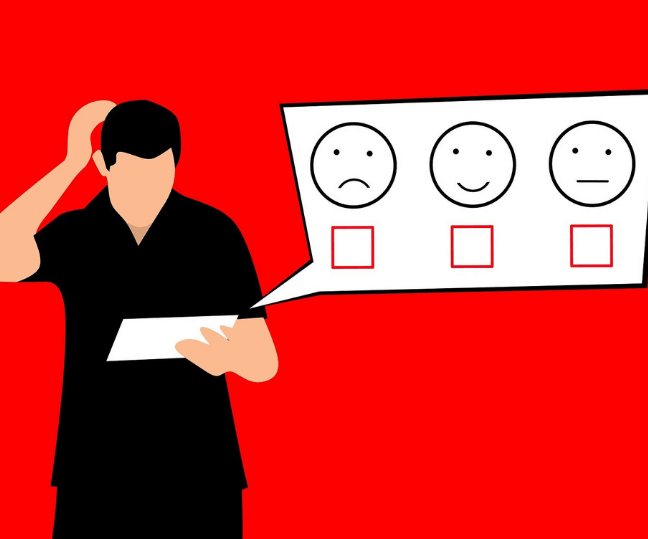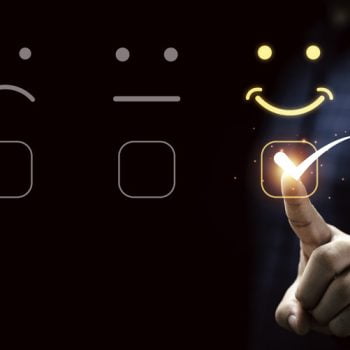We’ve all heard the phrase “the customer is always right.” Or, its variation like “customer is king.” But is this really true? Is it always in the best interest of businesses to give customers what they want? The answer is no. There are times when it’s actually better for companies to stand their ground and say no to customer demands. Why? Because sometimes customers are wrong.
They may not intentionally try to cause problems, but their demands may not be feasible or in line with what your business is trying to achieve.
Here are a few examples of when Customers Are Not Always Right:
When the customer is being unreasonable
There will always be a few customers who try to take advantage of businesses by making unreasonable demands. They may try to get a refund for an item they’ve used or damaged, or may try to return an item they bought weeks ago. In these cases, it’s perfectly okay for businesses to say no. Customers are not entitled to returns or refunds just because they demand it.
When the customer is asking for something that’s not possible
Sometimes customers will ask for something that’s not possible for the business to provide. For example, they may want a custom-made product outside the company’s capabilities. In these cases, it’s best to explain to the customer why meeting their request is impossible and offer alternatives if possible.
When the customer is being rude or disrespectful
Some customers will take their frustration out on businesses by being rude or disrespectful to employees. This is unacceptable behavior, and businesses have every right to say no to these customers. It’s important to always stand up for employees and maintain a respectful and professional environment.
Knowing when to say no to customers is essential to running a business
There will always be some customers who are unreasonable, disrespectful, or just plain wrong. It’s essential to know when to stand your ground and say no. It doesn’t mean that you don’t value your customer’s needs. It only shows that you’re not willing to accept unreasonable demands.
When the original phrase was coined, the meaning was clear. The customer is always right was more to teach employees to treat their customers with respect and work towards keeping the customers happy. That is not always sustainable, and the words cannot be taken literally. However, you can still say no to a customer while giving them their due respect.

Tips for what to do when the customer isn’t right
In any customer service or sales-related business, there will always be the occasional customer who is unhappy with your product or service. When it happens, it is essential to approach the customer with the benefit of the doubt – they may be right, except when they are not. So what can you do when the customer is not right?
Listen to their complaint and try to understand their perspective.
Listening to a customer complaint is one of the most important things a company can do to improve its service. It’s an opportunity to show the customer that you’re interested in their perspective and are willing to make changes to enhance the experience. In some cases, the customer just wants to be heard and may not have any specific suggestions. In other cases, the customer may have valid suggestions for improvement. Either way, it’s important to listen carefully and try to understand the customer’s perspective.
Offer an apology for the inconvenience or issue they’ve experienced.
You can offer an apology for the inconvenience or the customer’s disappointment in whatever product or service they are unhappy with, without altering your position. The customer is unhappy legitimately or otherwise; therefore, listening to them or apologizing to them for this inconvenience ensures that you are listening to the complaint and showing signs of empathy.
Offer a solution that will make the customer happy.
A good customer service department will have a list of alternatives to a problem with a customer. You could offer a solution or two as alternatives to the problem. It also shows that you are willing to try alternative solutions to keep them happy.
If the customer is still unsatisfied, offer a refund or exchange.
Listening, apologizing, or offering a solution may not always work. If the customer is intractable, your only option may be to either exchange the product or give them a refund.
Thank the customer for their feedback and let them know that you’ll do your best to improve in the future.
Thanking your unhappy customer is as important as thanking a happy customer at the end of the interaction. It is not to be taken lightly. After all, their unhappiness opens the door to identifying areas of improvement. Moreover, it shows a willingness to treat all customers with courtesy.
Following these tips can turn an unhappy customer into a satisfied one. They earn you goodwill and favorable reviews and may even help retain the customer.
Why is it better to say no to a customer?
The service industry, by definition, involves servicing, i.e., providing services to customers and businesses, and it is one of the essential industries in the world. Nevertheless, agreeing with the customer when they are wrong can be a weak strategy in the long term. For instance:
Demoralizing the workforce
Suppose the employees have to let the customers have their way regardless of the wrongness of the issue. In that case, it eats away at their ability to serve their customers intelligently or reasonably. Always saying yes to disgruntled customers can demoralize and make employees feel like automatons with no reasoning capacity.
Service teams can be right, too.
Customers can be wrong and have the right to express their displeasure. However, being abusive doesn’t do them any favors. Just as the service team must extend courtesy to the customers, so should the customer. Service teams do NOT have to tolerate rudeness in any form just to let the customer win and have their way.
Evolving service industry
Like all other industries, this has evolved into a technology-enabled service industry, including a wide range of businesses that provide services using advanced technology. It can cover anything from online companies to traditional brick-and-mortar businesses that use technology to improve their services while remaining customer-centric for an enhanced customer experience. Technologies like online chatbots and artificial intelligence-powered customer service agents have become commonplace. None of this negates the fact that the customer is not always right.
Key takeaways
Are customers always right? Explain.
No, not always. But businesses should always aim to satisfy their customers to the best of their ability. Sometimes customers may be unreasonable or make demands on a whim that are impossible to meet. At other times, they are wrong for your business in one way or another. And, the best of your ability may still not meet such customers’ expectations.
How do you respond to customers always right?
There are only a few responses to the old saying that customers are always right. If your company expects the service team to follow this to the letter, you could:
- Thank your customer for bringing the issue to your attention, and apologize for any inconvenience caused.
- Explain what happened and why it happened.
- Offer a solution to the problem.
- Always do a follow-up with the customer to ensure the problem has been resolved to their satisfaction.
How do you deal with unreasonable customers?
There are bound to be a few unreasonable customers, whatever the product or service. There are a few ways to handle them:
- Try to understand their perspective and where they are coming from. What is causing them to be unreasonable?
- Empathize with them. Show the customers that you understand their frustration. Attempt to resolve the issue. Sometimes all it takes is to listen to the customer and offer a solution.
- If the customer is still being unreasonable, you can try to defuse the situation using your training.
- You may have to step away from the situation if all else fails.
FAQ
Are customers always right? Explain.
No, not always. But businesses should always aim to satisfy their customers to the best of their ability. Sometimes customers may be unreasonable or make demands on a whim that are impossible to meet. At other times, they are wrong for your business in one way or another. And, the best of your ability may still not meet such customers’ expectations.
How do you respond to customers always right?
There are only a few responses to the old saying that customers are always right. If your company expects the service team to follow this to the letter, you could:
Thank your customer for bringing the issue to your attention, and apologize for any inconvenience caused.
Explain what happened and why it happened.
Offer a solution to the problem.
Always do a follow-up with the customer to ensure the problem has been resolved to their satisfaction.How do you deal with unreasonable customers?
There are bound to be a few unreasonable customers, whatever the product or service. There are a few ways to handle them:
Try to understand their perspective and where they are coming from. What is causing them to be unreasonable?
Empathize with them. Show the customers that you understand their frustration. Attempt to resolve the issue. Sometimes all it takes is to listen to the customer and offer a solution.
If the customer is still being unreasonable, you can try to defuse the situation using your training.
You may have to step away from the situation if all else fails.


















